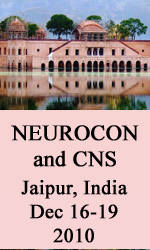Endoscopic endonasal transsphenoidal surgery
Neurosurgery. 2004 Oct;55(4):933-40; discussion 940-1.
Cappabianca P, Cavallo LM, de Divitiis E.
The endoscopic endonasal transsphenoidal approach is a minimally invasive surgical technique for the removal of sellar and parasellar lesions. The procedure is performed via an anterior sphenoidotomy. The two main characteristics of the endoscopic approach, when compared with the standard microsurgical operation, arise from the use of the endoscope as a unique optical device and from the absence of a transsphenoidal retractor. More convenient straight surgical instruments are employed, whereas bayonet-shaped tools are used in the microsurgical procedure, to avoid any interference with the light beam generated by the microscope. The standard surgical technique is composed of three main time phases: the nasal, sphenoid, and sellar phase. During the nasal phase, the scope is introduced through the chosen nostril and advanced up to the sphenoethmoid recess, where the sphenoidotomy is performed. The sphenoid phase consists of the detachment of the nasal septum from the sphenoid rostrum, the anterior sphenoidotomy, removal of the sphenoid septum or septa, and identification of the landmarks inside the sphenoid sinus. In the sellar phase, an opening of the sellar floor is performed for removal of the lesion. A wide view of the sellar environment is obtained through angled scopes to detect eventual tumor remnants. The procedure ends with the reconstruction of the sella and removal of the endoscope from the nostril, without any postoperative nasal packing.
Department of Neurological Sciences, Division of Neurosurgery, Università degli Studi di Napoli Federico II, Naples, Italy.








